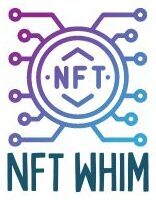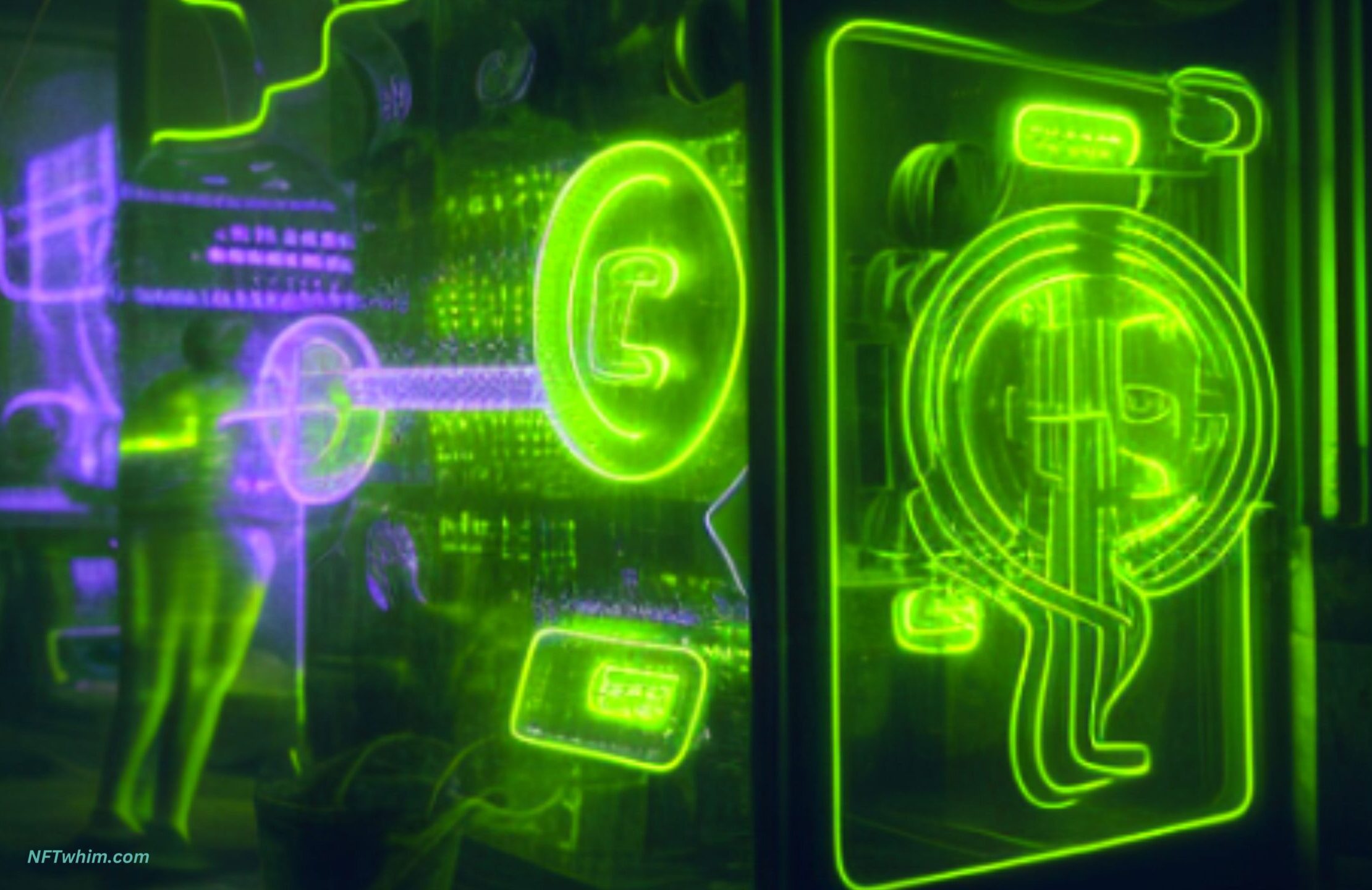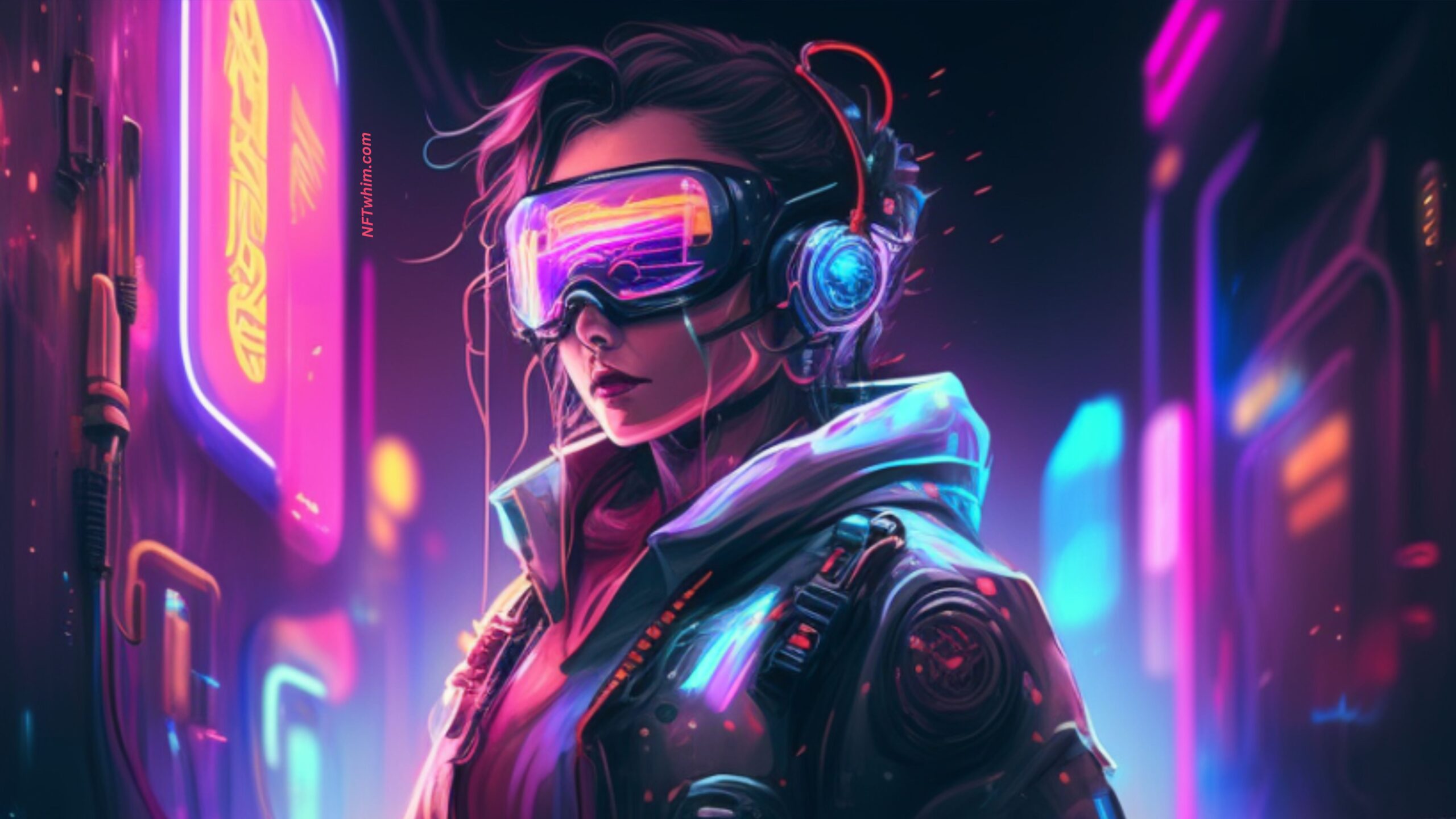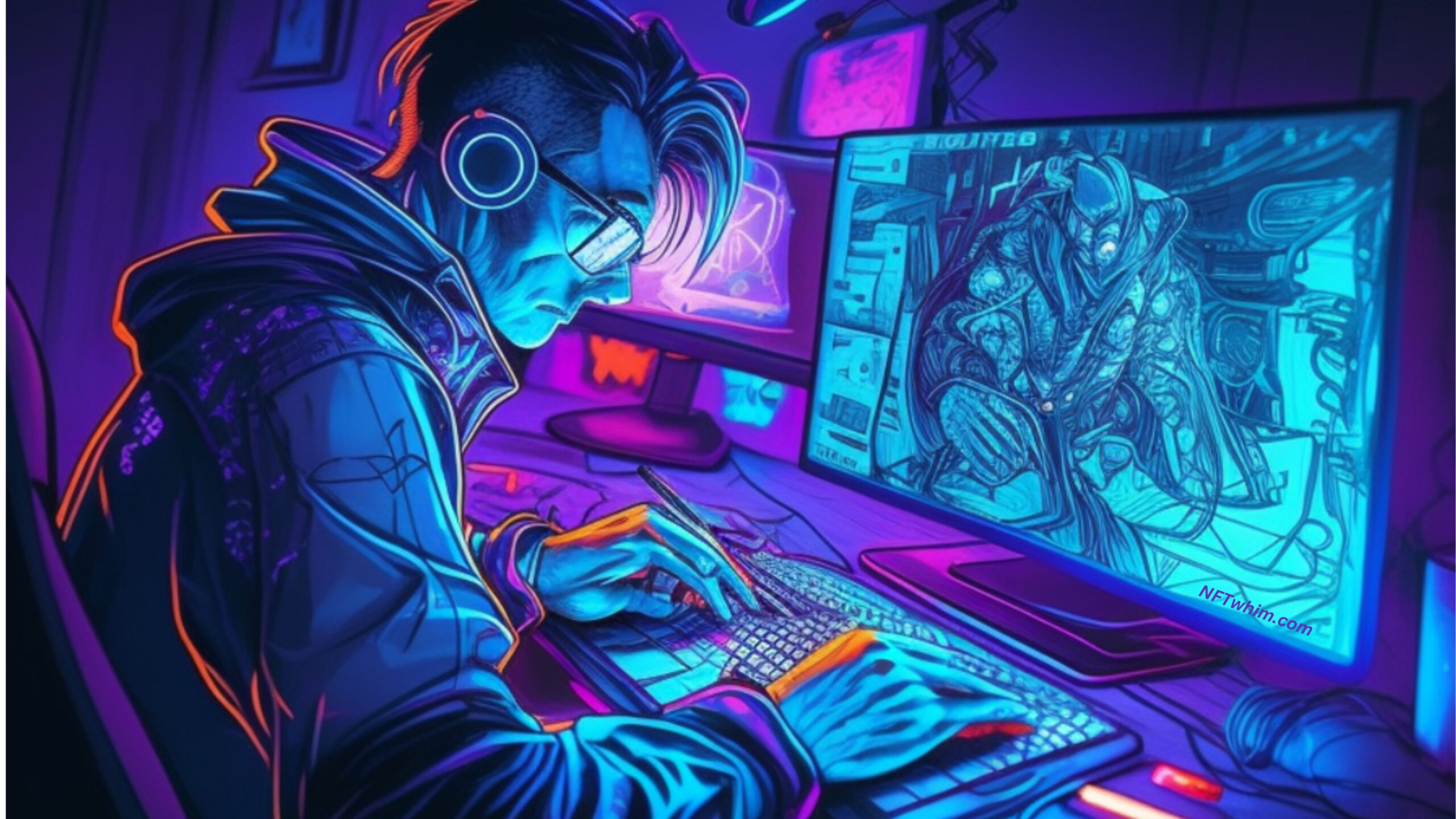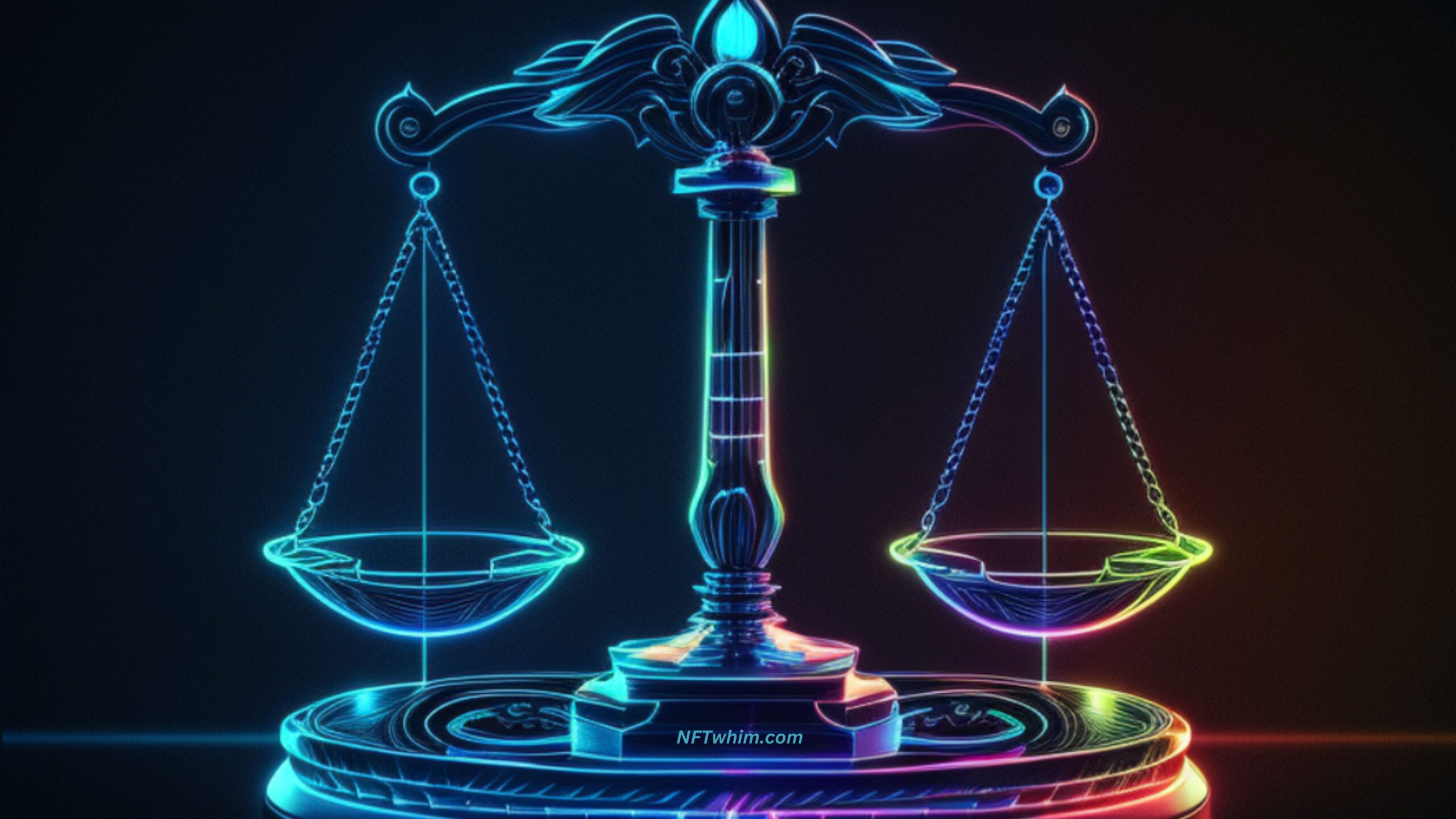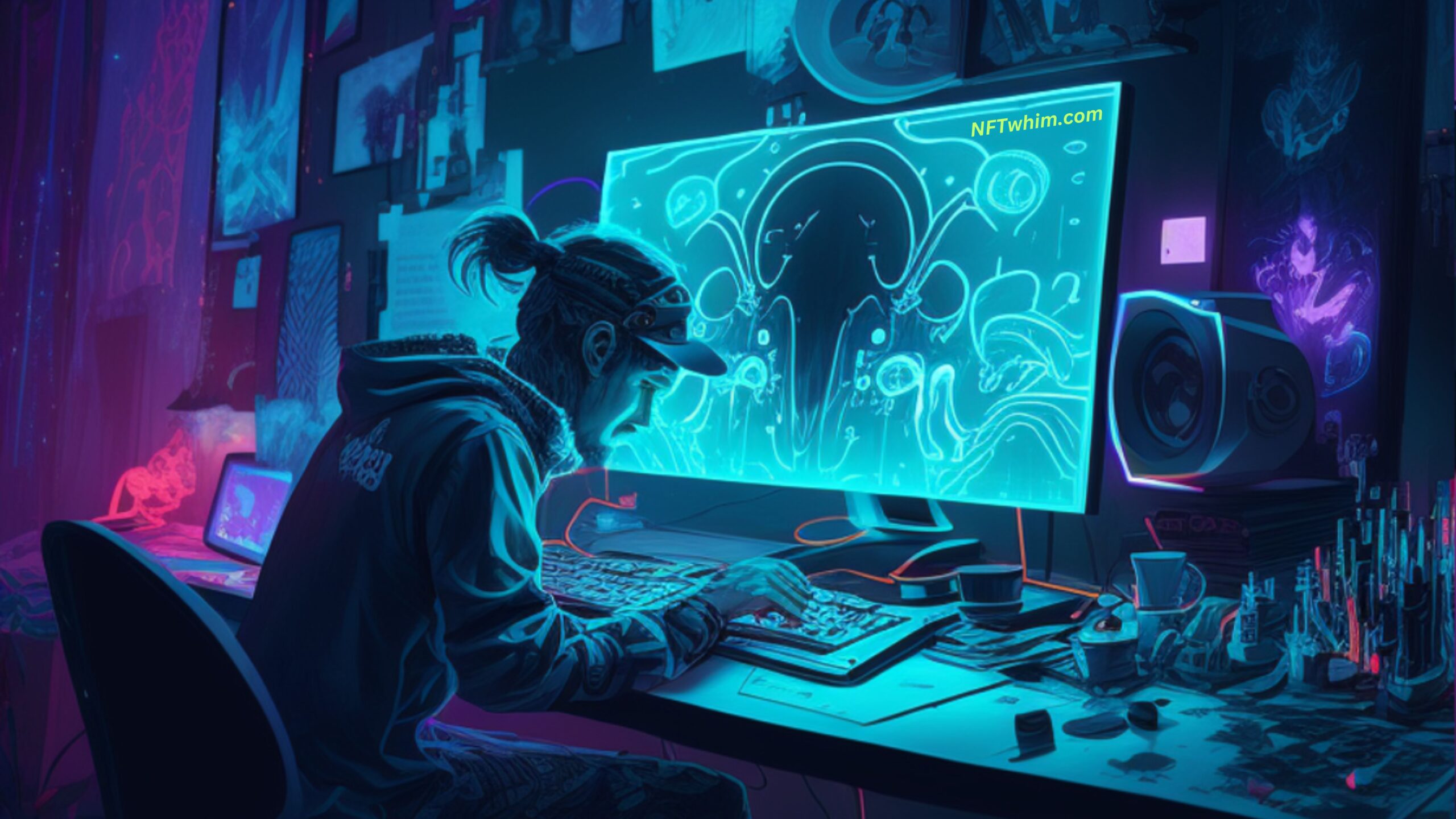In today’s digital age, the concept of ownership is being redefined by blockchain technology and the emergence of Non-Fungible Tokens (NFTs). Just like a castle in the sky, NFTs represent an ever-shifting landscape where virtual art, collectibles, and even land can be bought and sold as if it were tangible. But what exactly are NFTs? How do they work and why have they become so popular? To answer these questions, we must take a closer look at the role that blockchain technology plays in their creation.
Blockchain technology has revolutionized how people interact with each other on an economic level, and has opened the doors to Web3. By allowing users to securely store data across multiple computers or servers without relying on any single authority or intermediary, blockchain ensures greater trust between parties while also providing pseudonymity when needed. This same technology is now being used to create NFTs – tokens that are non-fungible because no two items are identical; meaning each token represents something unique within its network. This opens up opportunities for artists and entrepreneurs alike to monetize their creativity in ways never before possible.
In this article we’ll explore everything you need to know about the role of blockchain technology in NFT creation: from how it creates trust between buyers and sellers, to using smart contracts for secure transactions, all backed by cutting edge cryptography for protection against fraudsters. So let’s get started!
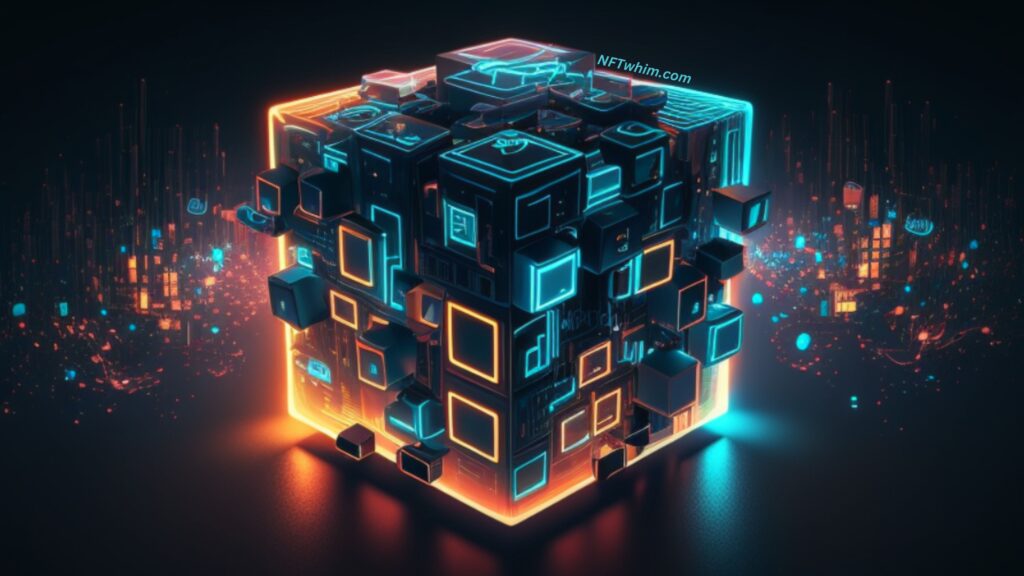
Definition Of NFTs
Non-fungible tokens (NFTs) are digital assets that exist on a blockchain network. They represent items of value, such as artwork, collectibles, and in-game items, but unlike fiat currency or cryptocurrencies, each token is unique and cannot be exchanged for another asset. NFTs have become increasingly popular over the last few years due to their ability to provide ownership rights, provenance tracking, and liquidity.
Blockchain technology has enabled the creation of these tokens by providing immutable records and secure transactions. This allows users to trust that the NFT they own is authentic and that its ownership can’t be reversed without their permission. By using smart contracts, creators can also set rules around how their NFTs are used or traded which provides an extra layer of security for buyers. As a result, this technology has revolutionized the way people think about digital art and other collectibles because it creates a safe environment where owners can freely trade with one another knowing that no fraud will occur.
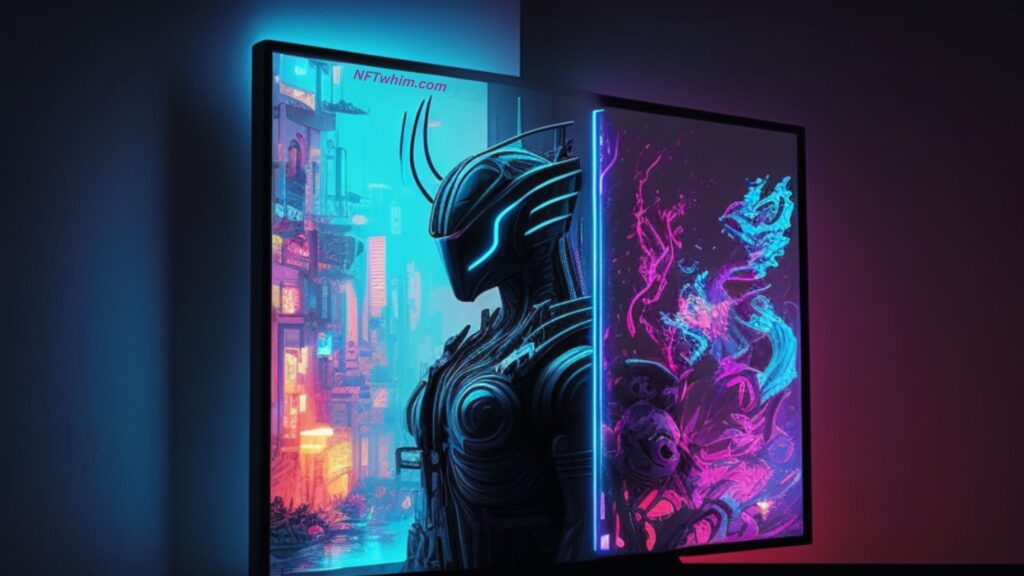
Properties Of Blockchain Technology
The properties of blockchain technology are integral to the creation and establishment of NFTs. By leveraging these benefits, users can enjoy a level of trust and security that is not available with other methods. Blockchain provides a tamper-proof ledger, immutability of records, decentralization, transparency, and privacy. All these features make it perfect for creating non-fungible tokens.
- Tamper-Proof Ledger: The decentralized nature of blockchain ensures that all transactions are recorded on multiple computers in an immutable format. This means it’s impossible to change or delete data without detection.
- Immutability: Every transaction made using blockchain technology is stored securely and permanently within its distributed ledger system. No one person has control over the data, making it difficult for anyone to alter or corrupt the information stored in the chain.
- Decentralization: Unlike traditional financial systems which are run by centralized authorities like banks, blockchains operate independently from any single entity or group of people. This makes them resistant to censorship as no individual can manipulate or censor transactions taking place on the network.
- Transparency: All transactions conducted on a blockchain platform are publicly viewable by everyone who uses it – granting unprecedented levels of visibility and accountability across the entire network.
- Privacy: Users have complete control over their personal data when conducting transactions on a blockchain platform due to strong encryption protocols used by developers. This prevents third parties from accessing sensitive information about individuals without their consent – protecting their right to privacy while still allowing them access to essential services such as banking and insurance products.
With this combination of attributes, blockchain technology forms the foundation upon which NFTs can be created in a secure, transparent manner that allows users to maintain full ownership over their digital assets at all times. In doing so, they ensure that artists receive fair compensation for their work while also providing buyers with peace of mind knowing that their purchases are authentic and genuine works of art they can proudly display forever more!
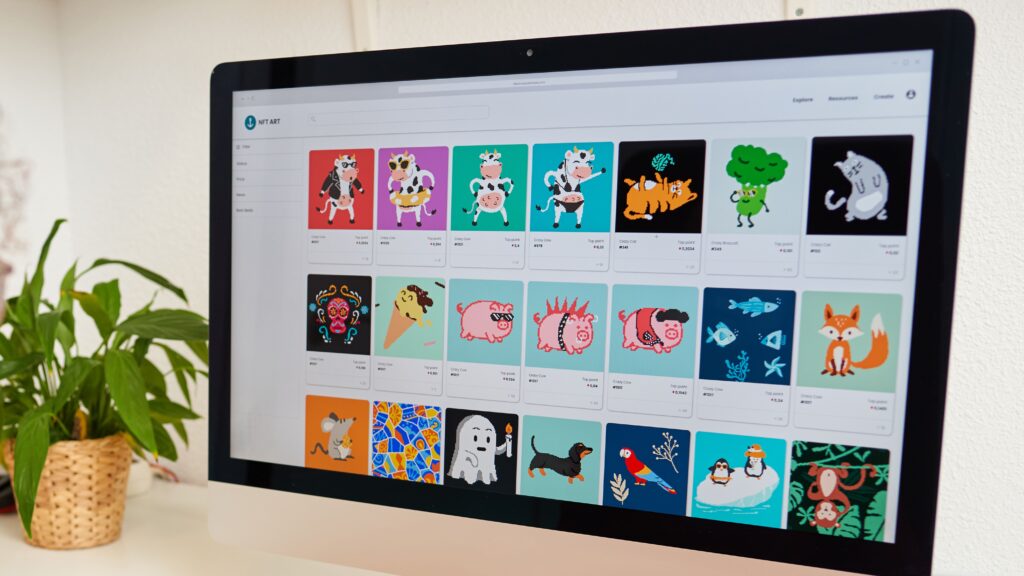
Benefits Of NFTs
The potential of Non-Fungible Tokens (NFTs) is vast, and the benefits they offer are immense. As we stand on the brink of a revolution in digital asset ownership, NFTs provide us with an opportunity to explore new creative possibilities.
Imagining being able to own a virtual car that you can show off around town or trading your favorite comic book characters as collectibles – these are all possible through blockchain technology and NFTs. They enable secure transactions of digital assets without the need for any third party intermediaries or centralized control. By using smart contracts, owners have full autonomy over their assets, allowing them to set rules regarding how they should be used or traded. Furthermore, NFTs are immutable so the authenticity of the item is always maintained, which makes it much harder for counterfeiting activity to occur.
In this age where technology has become more powerful than ever before, owning unique digital items has become easier than ever before. With NFTs people are now free to express themselves in ways never thought possible by having access to rare or one-of-a-kind pieces of art and other digital goods. The freedom that comes along with owning something truly unique is becoming increasingly attractive as individuals look for ways to differentiate themselves from others within their social circles and beyond.
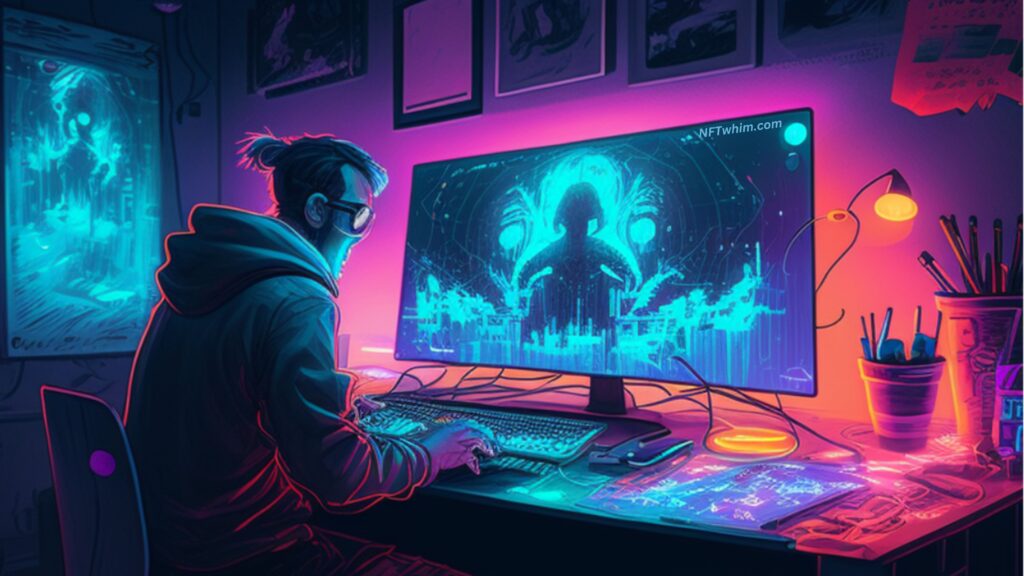
How To Create An NFT
Creating an NFT can be a complicated process and requires knowledge of blockchain technology. Fortunately, the use of this technology makes it easier than ever to create your own Non-Fungible Token (NFT). Here are some steps you should take when creating your own token:
- Acquire a platform that supports smart contracts such as Ethereum.
- Use a program like OpenZeppelin to generate the contract code for your NFT.
- Submit the generated code to the chosen blockchain network.
- Make sure all parameters such as name, symbol, and total supply have been set correctly.
- Publish the token on marketplaces like OpenSea or SuperRare.
Now that you understand how to create an NFT with blockchain technology, you’ll want to consider what type of content will make up your token – artwork, music, in-game assets, etc. Once these decisions have been made, you can begin designing and developing your project with confidence knowing that blockchain technology provides added security and immutability throughout its entire life cycle!
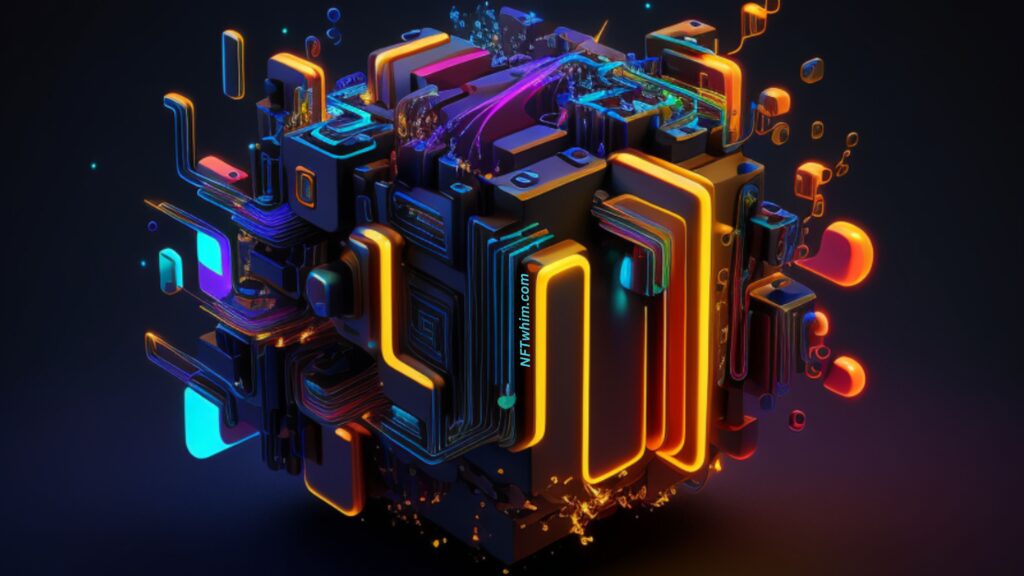
Digital Assets And Their Value
We live in an ever-evolving digital world. A world where our identities are tied to intangible assets, and the value of these assets is constantly shifting. As technology advances, so does our reliance on it; we rely on it for security, trustworthiness, and transparency. And with blockchain technology at the forefront of this revolution, digital assets have become a source of immense potential.
Blockchain has enabled us to create Non-Fungible Tokens (NFTs), which are digital representations of real or virtual objects that can be bought and sold as investments. NFTs provide users with unique ownership rights over their digital property, allowing them to store and trade them securely without fear of theft or counterfeiting. This newfound freedom gives people unprecedented control over their own wealth – something many have been denied until now. The ability to invest in tangible items such as artwork or collectibles using NFTs also opens up new opportunities for those who may not otherwise have access to traditional investing methods. By leveraging blockchain’s immutable ledger system, users can rest assured knowing they will always hold title over their asset regardless of its future worth. With the emergence of NFTs comes a powerful tool – one that grants individuals autonomy over their finances while providing the foundation for further financial innovation.
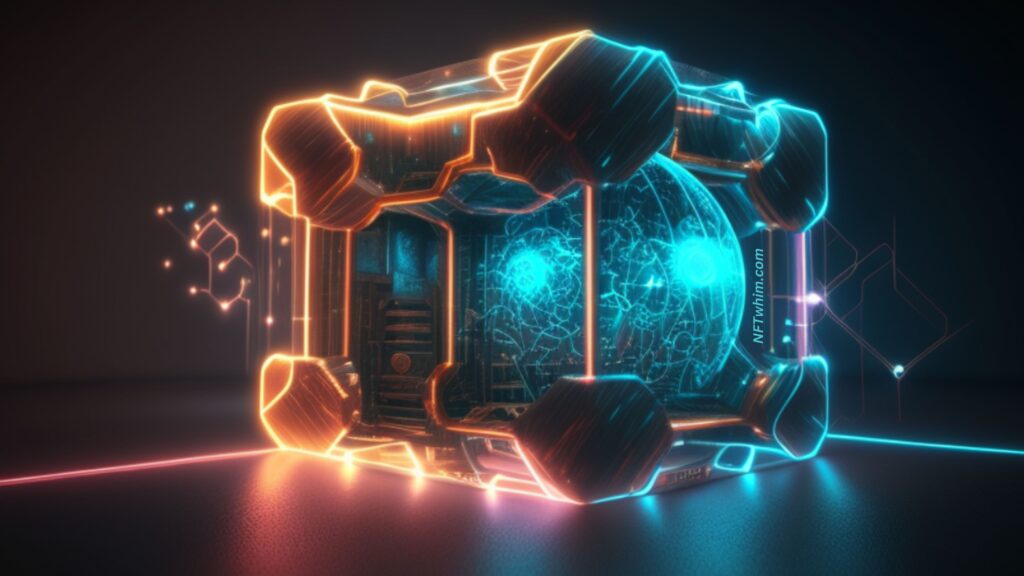
Cryptocurrency And Its Usage With NFTs
Cryptocurrency is increasingly being used to purchase and trade NFTs. By using cryptocurrency, users can securely buy and sell digital assets without relying on banks or other financial institutions. This means that transactions can be faster and more secure than traditional methods of payment. Moreover, due to its decentralized nature, it allows buyers and sellers to remain anonymous while transacting with each other.
The use of blockchain technology has further enabled the growth of the NFT market by making sure that all transactions are immutable and transparent. Blockchain also makes it easier for users to verify the authenticity of their purchases since every transaction is recorded in a ledger which is visible to everyone involved in the network. This ensures that no fraudulent activities take place during any given transaction as well as providing an extra layer of security for both parties involved in the process. Furthermore, blockchain technology also helps reduce fees associated with transfers as there are no third-party intermediaries required when dealing with NFTs.

Smart Contracts And Tokenization
The financial world has been revolutionized by the emergence of blockchain technology and its subsequent applications. Whereas cryptocurrency was one step towards a more secure, trustless future, smart contracts and tokenization have taken that even further. With these two concepts combined, we can now do things such as create NFTs in an efficient and decentralized manner:
- Smart Contracts provide users with the ability to store information on the blockchain securely and transparently. This allows for transactions between parties to occur without needing any third-party intermediaries or centralized authorities.
- Tokenization is the process of representing something with a digital asset which can be exchanged or traded. By tokenizing real-world assets such as art, music, or other collectibles, they are transformed into digital tokens which can then be used to trade via a blockchain network.
This combination of smart contracts and tokenization offer numerous advantages over traditional methods of exchanging goods or services. It provides increased security through immutability; it makes everything more accessible due to being able to use them online; and it also increases liquidity since there is no need for physical ownership of an asset. Furthermore, it enables greater transparency when dealing with large sums of money because all data stored on the ledger cannot be altered once written. All these benefits make it possible for us to create Non-Fungible Tokens (NFTs) quickly and securely while allowing buyers and sellers alike to reap the rewards from making transactions within this new system.
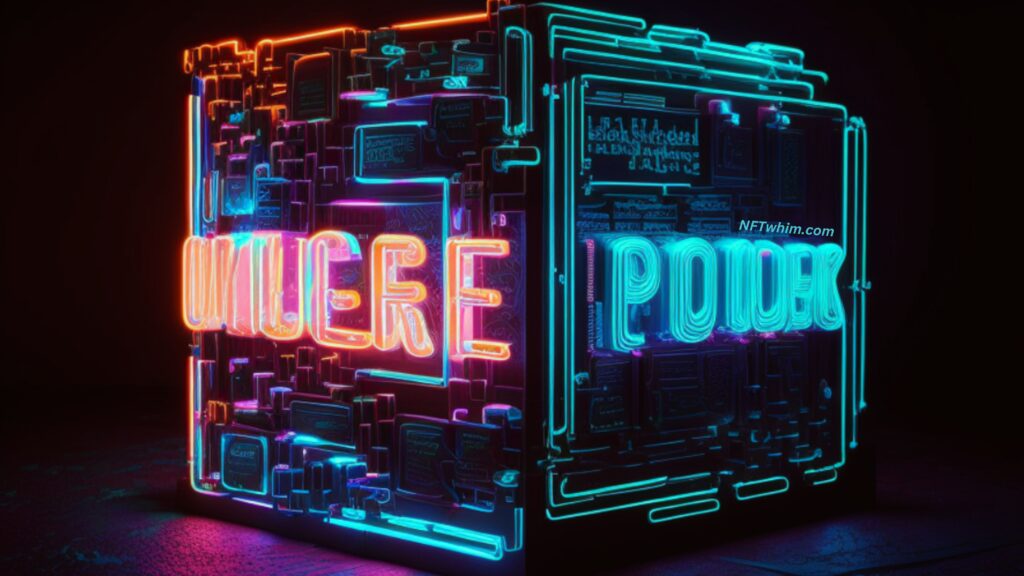
Security Measures For NFTs
The use of blockchain technology in NFT creation is essential for the security of the asset. Blockchain-based records are immutable and highly secure, which means that all transactions associated with an NFT can be traced back to its original source. This ensures that any modifications or manipulations made to the asset are easily detectable and tracked.
Moreover, a decentralized BLOCKCHAIN like Ethereum offers enhanced security measures by enabling users to control their own private keys. This decentralization allows anyone who owns an NFT to have full control over it without needing to trust a third party. As such, these features make blockchain technology one of the safest ways to store and transfer digital assets like Non Fungible Tokens (NFTs). Ultimately, this provides much needed peace of mind knowing that your assets are safe from tampering or theft.

Regulations For Non-Fungible Tokens
Blockchain technology has made it possible for Non-Fungible Tokens (NFTs) to become a popular form of digital asset. However, there are still regulatory considerations that need to be taken into account when creating an NFT. Here’s what you should consider:
- Know the laws and regulations in your jurisdiction or country – It is important to understand the legal requirements associated with issuing NFTs in order to remain compliant and avoid any potential fines or penalties.
- Check if there are any taxes related to the issuance of tokens – Taxes can often vary from state to state, so ensure you have all the relevant information about tax obligations associated with issuing NFTs prior to launching your project.
The most important thing when considering regulations for NFT creation is knowing who regulates them – usually this will fall under securities law depending on how they’re structured. If the token does not meet specific criteria as defined by each jurisdiction then it won’t qualify as a security but could instead be classified as a commodity, which would require different types of regulation. As such, it is essential that anyone looking to create an NFT understands their legal responsibilities within their own jurisdiction before proceeding. Taking these steps will help ensure compliance with local legislation while providing peace of mind that your project meets all pertinent regulatory requirements.
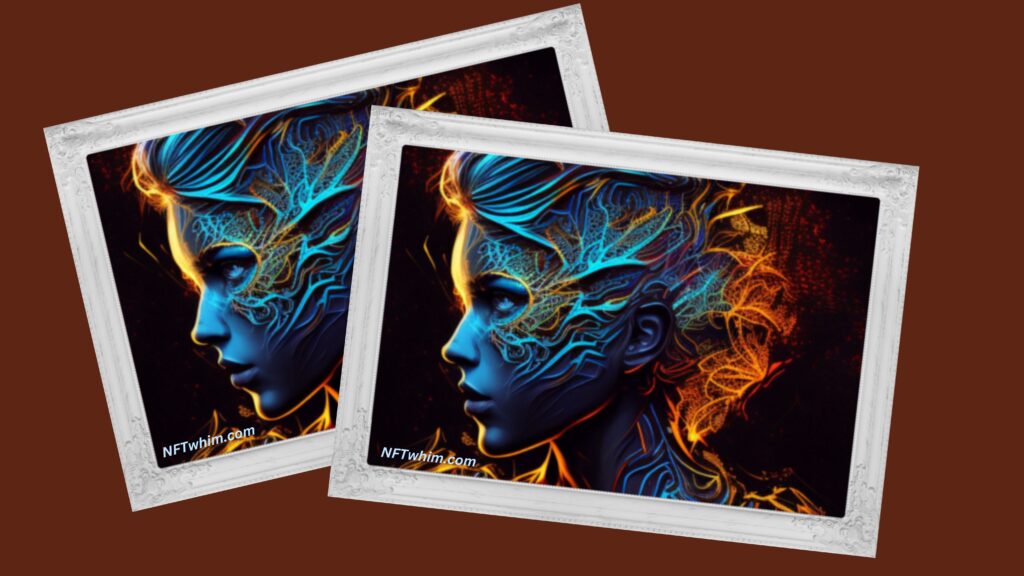
Collectibles, Art And Music On The Blockchain
Moving on from the regulations surrounding NFTs, another prominent application of blockchain technology is its use in creating collectibles, art and music. The development of this sector has been accelerated by the advent of non-fungible tokens (NFTs), which allow creators to register their work as a digital asset with immutable proof that it is genuinely one-of-a-kind. This makes it easier for them to protect their intellectual property rights and monetize their creations through tokenization.
The use of blockchain technology also opens up new possibilities for artists and musicians to reach audiences around the world without relying on intermediaries like record labels or streaming services. There are now several platforms that enable users to trade, buy and sell artwork, music, tickets and other collectibles directly using cryptocurrency payments – allowing content creators to keep more of their profits while still ensuring secure transactions. Moreover, some platforms also offer tools for fans and collectors to find unique pieces created by emerging artists who may not have access to traditional channels yet.
In short, blockchain technology provides an innovative way for creators to showcase their talents globally and make money off their works without sacrificing ownership over them. It’s giving rise to an independent creative economy where people can take control of how they market themselves while making sure they’re fairly compensated for their efforts.
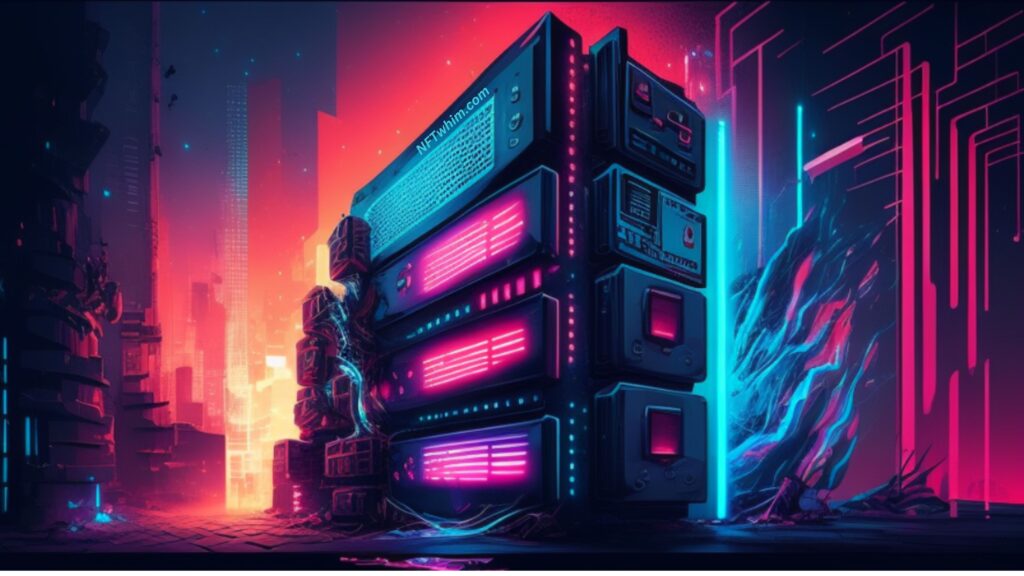
Decentralized Finance (Defi) And NFTs
Blockchain technology has revolutionized the way DeFi and NFTs are created. It’s enabled a new system of trustless, peer-to-peer transactions that have led to an entire economy beyond centralized institutions.
The emergence of blockchain technology has seen increasing demand for decentralized finance and non-fungible tokens (NFTs). Here are three ways it is transforming the financial landscape:
- Increased Security: Blockchain provides higher levels of security than traditional systems due to its distributed ledger structure. Transactions on this ledger cannot be altered or reversed without consensus from other participants in the network, which makes them much more secure than traditional banking solutions.
- Faster Payment Processing: With blockchain technology, payments can be processed almost instantaneously as there is no need for third parties such as banks to approve the transaction before it is completed. This increases efficiency while reducing costs associated with processing fees.
- Data Transparency: As all data stored on the blockchain is publically accessible, anyone can view past transactions and current balances at any time – making it easy to track money flows around the world.
This improved level of transparency also means that creators can easily mint their own digital assets onto blockchains through NFT platforms like Ethereum’s ERC721 standard, thus creating scarcity and allowing users to own tangible items they can trade with others directly via smart contracts. Through these advancements we are seeing real progress towards greater decentralization and freedom within our global economic ecosystem.
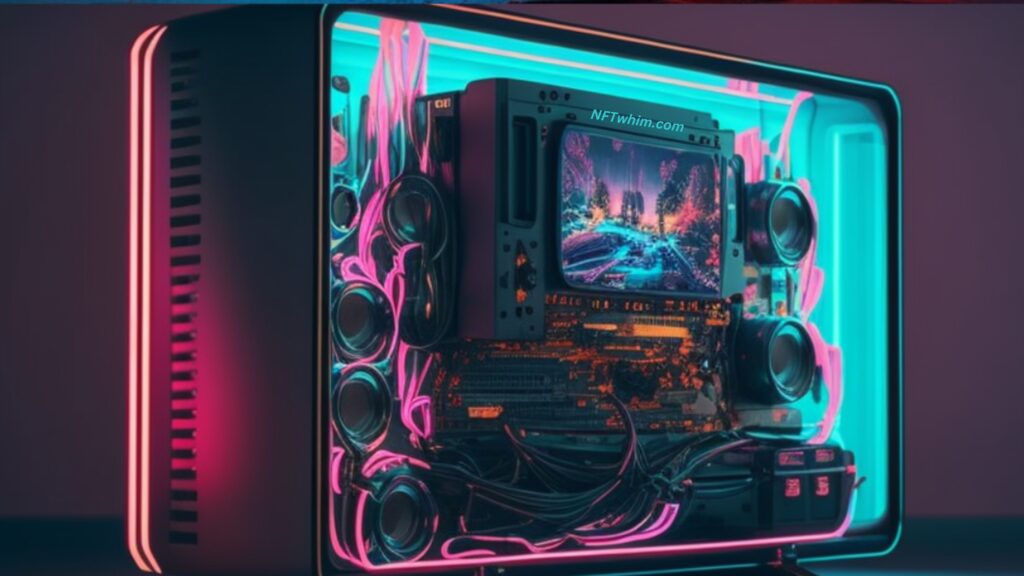
Gaming Platforms Leveraging Blockchain Technology
It’s like a game of chess, where the board is the blockchain technology. Upon it lie pieces that can be moved in any direction at will – NFTs (Non-Fungible Tokens). This new kind of asset allows gamers to truly own their digital items, something which has not been possible until now. With its decentralized nature, the blockchain makes sure that these assets are protected from manipulation or tampering and remain securely stored in the player’s wallet.
The use of blockchain technology has revolutionized gaming platforms by providing users with an unprecedented level of freedom. They no longer need to worry about data breaches or censorship as all information is secure on the immutable ledger. Furthermore, gamers have more control over their virtual goods due to the fact that tokens are non-fungible and thus cannot be replicated or counterfeited. This means they can choose how much value each item holds without having to rely on anyone else for validation. As such, players are empowered to create unique experiences and monetize them how they see fit – transforming what was once just a hobby into meaningful economic activity.
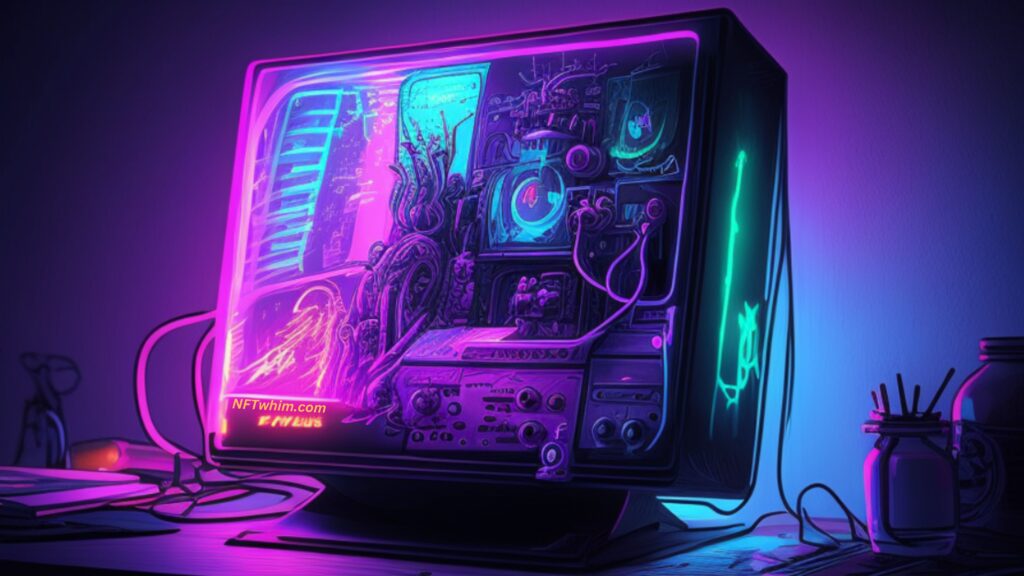
Challenges Facing The Adoption Of Non-Fungible Tokens
Despite the potential that non-fungible tokens (NFTs) have to revolutionize digital asset trading, there are still some important challenges facing its widespread adoption. Primarily, these relate to scalability and liquidity of NFTs. For instance, Ethereum’s blockchain is currently unable to support a large number of transactions without experiencing high fees or slow processing times. Additionally, since most NFTs exist on their own custom networks, it can be difficult for buyers and sellers to find each other in order to trade them.
To address this issue, developers must work together to create an interoperable marketplace where users can freely move between blockchains and transact with one another easily. This will enable more efficient trading while also providing greater security as well as access to more diverse assets. Furthermore, partnerships between traditional financial institutions and cryptocurrency projects could provide needed liquidity by allowing users to convert fiat currency into crypto assets in just a few clicks. With such solutions in place, we may soon see mass adoption of NFTs across industries far beyond gaming and art collecting.
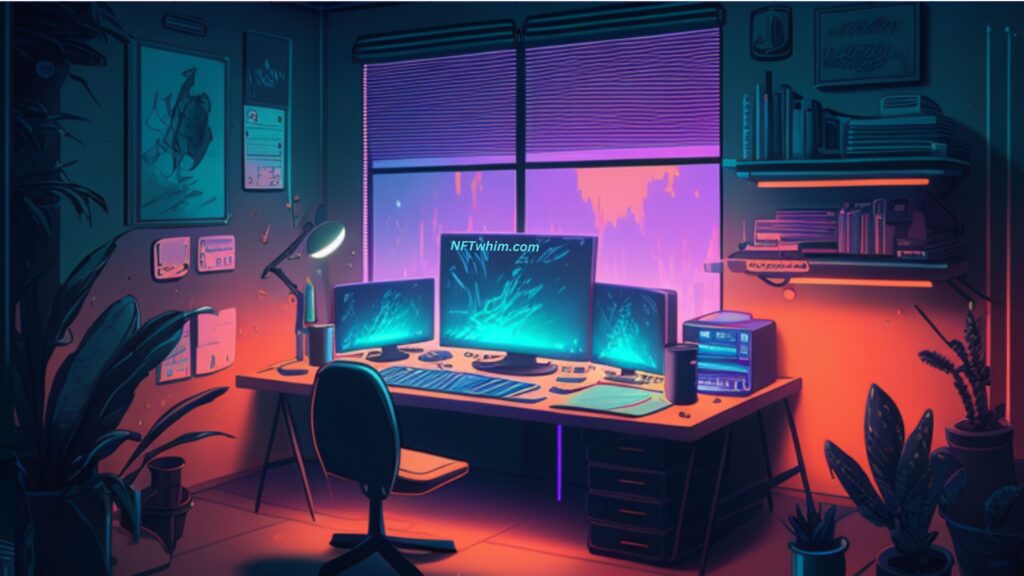
Conclusion
In conclusion, it’s clear that blockchain technology plays a crucial role in the creation and verification of Non-Fungible Tokens (NFTs). Its innovative features allow both creators and collectors to protect their assets from theft or fraud, while also allowing them to maximize profits.
Overall, thanks to blockchain technology, NFTs have become increasingly popular among digital asset traders and collectors around the world, and has opened up a new arena for artists and creators to showcase and sell their work!
Robin
Author: Robin Olsson
Author Bio: I’m Robin and on this website, I share everything I’ve learned since getting into NFTs in 2021. I have a background in research and I’ve been in crypto for several years. You can read more about me here.
